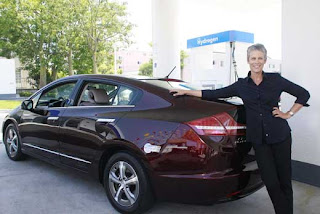Perhaps the only time you’ve heard about fuel cell vehicles is when Hollywood stars roll up to the red carpet. A star with a green streak is more than happy to lend his or her name to the cause of emission-free motoring, and car companies will do what’s necessary to promote their forward-thinking advanced technologies.
Separating Hydrogen Truth and Fiction
But there’s evidence that hydrogen fuel cell cars—largely dismissed as fantasy in recent years—might one day become more than just the stuff of science fiction movies. Ironically, Tinsel Town and Greater Los Angeles—a town where fiction and gritty realities collide—is becoming the location for real fuel cell cars, although still on a limited basis. Los Angeles enjoys the support of state and local government agencies and a budding infrastructure for refueling—including 20 hydrogen stations and another seven in the planning stages. The lack of a refueling network is perhaps the biggest obstacle to the deployment of hydrogen-powered cars.And then there was the large showing of fuel cell cars at the recent Los Angeles Auto Show—demonstrating that fuel cell technology remains an important area of research and development focus for automakers, along with the hybrids, plug-in hybrids, and full electric vehicles that are likely to appear on the market sooner.
Hydrogen-powered fuel cell cars are essentially electric vehicles—producing their electricity onboard instead of having it supplied from the grid. Compressed hydrogen passes through a fuel cell membrane that produces electricity to power the car.
Fuel Cell Highlights from the Los Angeles Show
Fuel cell vehicles certainly face challenges before becoming a mainstream product, but many in the industry and government still see them as the “holy grail,” capable of delivering all of the convenience and performance of an internal combustion engine without the pollution and greenhouse gases, or dependence on fossil fuel.






No comments:
Post a Comment